- Introduction: Why Learning Games at Home Matter
- What Makes a Great Learning Game (Core Qualities of Educational Play)
- Benefits of Learning Games at Home (Cognitive, Emotional & Family Gains)
- Top Categories of Learning Games (Types of At-Home Learning Play)
- Simple Educational Games for Kids at Home (Toddlers & Preschoolers)
- School-Age Boosters: Educational Games for Kids at Home (Ages 5–10)
- Family & Cooperative Learning Games (Parent-Child Activities)
- DIY & Printable Learning Games (Creative, Low-Prep Ideas)
- Screen-Free vs. Digital: Finding a Healthy Balance
- Make Learning Activities for Kids at Home Part of Your Day (Routines & Tips)
- Age-Wise Game Menu (Quick Reference)
- Materials Starter Kit (Low-Cost, High-Impact)
- Cultural & Family Tips (Make It Yours)
- Troubleshooting: When Games Go Sideways
- Sample 7-Day Play Plan (Plug-and-Play)
- Conclusion: Keep Playful Momentum Rolling
- 🧩 FAQs About Educational Games for Kids at Home
Introduction: Why Learning Games at Home Matter
Parenting doesn’t come with a manual, but play comes close. When you bring playful structure into your day, children absorb skills in a way that feels natural, joyful, and culturally rooted in family life. Whether you’re in a small condo or a multi-generational home, choosing educational games for kids at home can turn simple moments—breakfast, bath time, bedtime—into learning sparks. Think of play as your daily “micro-classroom”: no desks required, just curiosity, conversation, and a few household items.
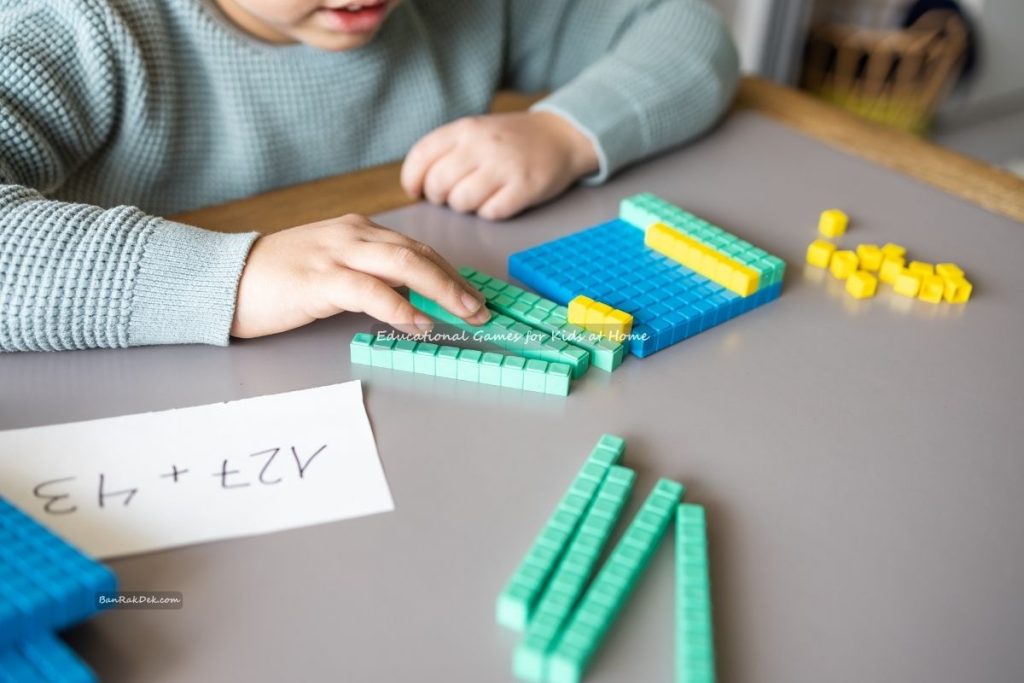
Here’s what makes at-home play powerful. First, games lower the pressure; they invite mistakes and experimentation. Second, they’re flexible enough to honor your family’s rhythm—maybe a quick counting game after dinner or a five-minute word hunt before school. Third, they let you adapt to your child’s culture, language, and interests. A treasure hunt can include local foods or family traditions; a story game can use phrases from your home language as children develop bilingual skills.
👉 “Looking to turn playtime into learning time? Explore The Benefits of Games and Toys for Kids.”
We’ll explore practical, age-appropriate ideas—toddler to school age, solo to family teamwork, screen-free and (when meaningful) digital. You’ll also see how educational games for kids at home can build executive function, early literacy, number sense, and social-emotional skills while strengthening family bonds. And for busy days, we’ll share quick wins you can plug into your routine. By the end, you’ll have a toolkit of playful plans and learning activities for kids at home that feel attainable, not overwhelming.
What Makes a Great Learning Game (Core Qualities of Educational Play)
Before we dive into specific ideas, let’s define what “great” looks like. A strong at-home learning game is:
- Purposeful yet playful. It targets a skill—phonics, counting, inquiry, creativity—without feeling like a worksheet in disguise.
- Easy to set up and repeatable. If it takes longer to prepare than to play, it won’t stick.
- Adaptable. You can scale difficulty up or down for siblings, mixed ages, or bilingual contexts.
- Hands-on. Movement and manipulation (sorting, building, tapping, clapping) cement memory.
- Feedback-friendly. Kids see or hear if they’re on the right track and learn to self-correct.
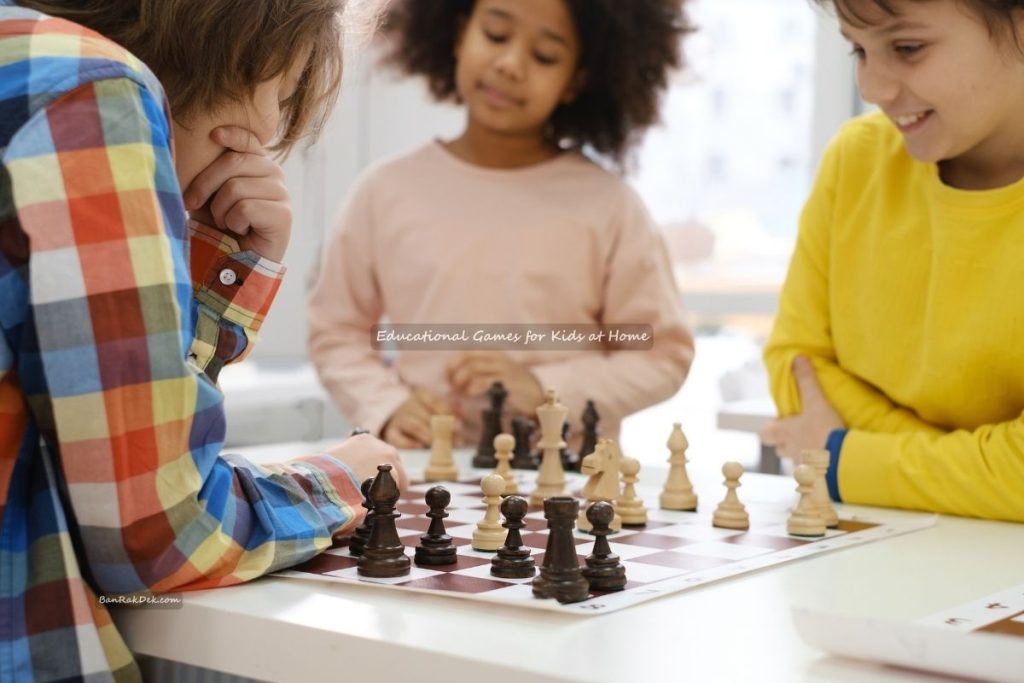
When you evaluate options or invent your own, ask: “Does this invite curiosity?” Many of the best educational games for kids at home come from asking that one question and then letting your child co-create the rules.
Benefits of Learning Games at Home (Cognitive, Emotional & Family Gains)
At-home play builds layered growth:
- Cognitive: Memory, attention, problem-solving, and flexible thinking.
- Language & Literacy: Vocabulary, phonological awareness, narrative skills, and print concepts.
- Math & STEM: Number sense, spatial reasoning, measurement, patterning, and cause-and-effect.
- Motor: Fine-motor (pinching, threading, cutting) and gross-motor (balance, jumping) control.
- Social-Emotional: Turn-taking, resilience, empathy, and self-regulation.
- Family Culture: Shared routines, storytelling, and traditions shape identity and belonging.
This is why parents love learning activities for kids at home: they multiply benefits, fit real life, and give you daily chances to affirm your child’s interests—whether that’s dinosaurs, cooking, nature, art, or football.
Top Categories of Learning Games (Types of At-Home Learning Play)
To help you navigate, the ideas below are organized into five categories:
- Early-Age Fun: toddler and preschool learning games with sensory play and fine-motor challenges.
- School-Age Boosters: math, reading, and science games, including STEM challenges.
- Family & Cooperative Play: teamwork, communication, kindness, and problem-solving.
- DIY & Printables: low-prep, household-item games and printable options you can reuse.
- Screen-Free vs. Digital: finding a healthy, intentional balance.
👉 “Looking for fun ways to keep your little one off screens? Don’t miss our guide on Ultimate Guide to Screen‑Free Learning Games for Toddlers.”
Simple Educational Games for Kids at Home (Toddlers & Preschoolers)
Age focus: 18 months–5 years.
Why it works: Early learners thrive on sensory input, repetition, and imitation. Keep it short (5–10 minutes), tactile, and joyful.
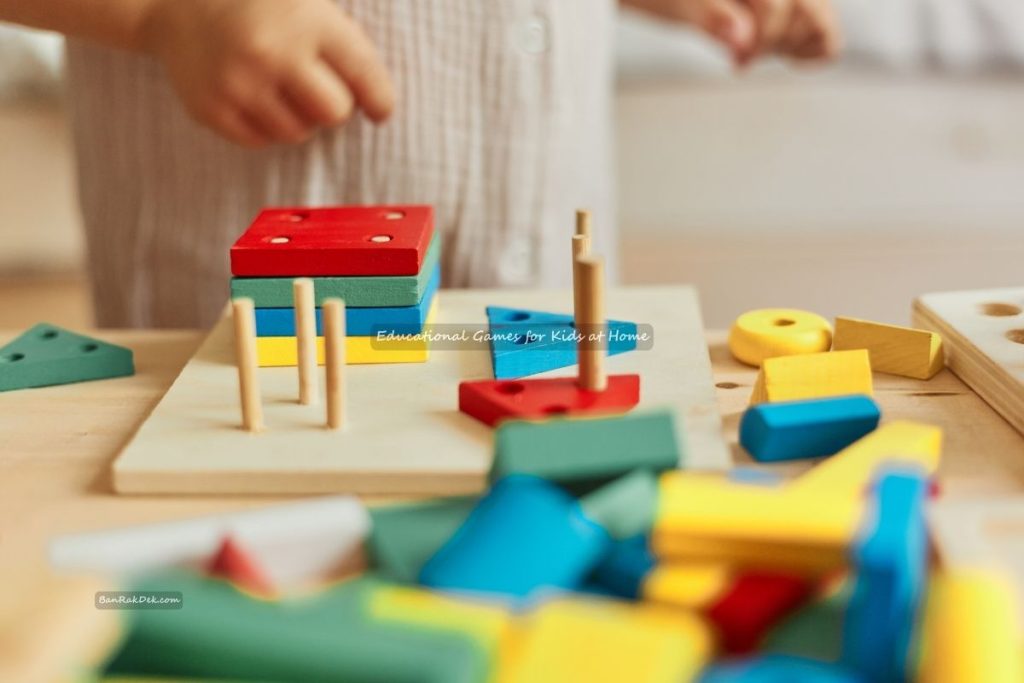
A. Sensory Sort & Match
- Skills: Color recognition, categorization, vocabulary.
- Setup: Place bowls or baskets labeled with colored stickers; offer safe objects (blocks, caps, cloth scraps).
- Play: Invite your child to “feed” the bowls by color or texture; narrate actions to grow vocabulary.
B. Treasure Tongs
- Skills: Fine-motor, hand-eye coordination, early counting.
- Setup: A bin with cotton balls, pom-poms, or bottle caps plus tongs and cupcake liners.
- Play: Scoop with tongs, sort by size, and count items into liners (“two in blue, three in red”).
C. Silly Steps Story Walk
- Skills: Sequencing, listening, body awareness.
- Setup: Tape simple picture cards on the floor (jump, tiptoe, clap).
- Play: Children follow the path, narrating a story as they move (“First we tiptoe to the market, then we hop like frogs!”).
D. Sound Hunt
- Skills: Phonemic awareness, listening, early literacy.
- Setup: Choose a sound (e.g., /m/).
- Play: Walk around the room finding items that start with that sound; snap a photo list to review later.
E. Bowl & Roll Numbers
- Skills: One-to-one correspondence, number sense.
- Setup: Label plastic bowls 1–6.
- Play: Roll a soft ball; wherever it stops, place matching counters in that bowl. Repeat and compare “more” and “less.”
For this age, educational games for kids at home should be bite-sized and repeatable. Rotate two or three favorites each week and watch confidence bloom.
School-Age Boosters: Educational Games for Kids at Home (Ages 5–10)
Why this stage matters: Children move from learning-to-learn toward mastering foundational literacy and numeracy. Games help them practice without the stress of “getting it right” on paper.
A. Word-Dash Relay
- Skills: Phonics, sight words, fluency.
- Setup: Tape word cards on walls.
- Play: Call a word; your child dashes to tap it and read it aloud. Add a timer for a friendly challenge.
B. Kitchen Fraction Lab
- Skills: Fractions, measurement, proportional reasoning.
- Setup: Pick a simple recipe and scale it up or down.
- Play: Ask questions like, “If we double ⅓ cup, what do we get?” Use transparent cups to visualize.
C. Pattern Detective
- Skills: Algebraic thinking, logic.
- Setup: Lay out patterns with coins or beads (AAB, ABB, ABC).
- Play: Your child predicts the next sequence, explains the rule, then creates a new one for you to solve.
D. Card-Game Math (War with a twist)
- Skills: Addition, subtraction, mental math.
- Setup: Standard deck; remove face cards or assign values.
- Play: Players flip cards and race to add; the fastest wins the round. Adjust to subtraction or multiplication.
E. Five-Minute STEM Sparks
- Skills: Inquiry, testing, engineering mindset.
- Setup: Paper, tape, coins, straws.
- Play: Build the tallest paper tower; test bridge strength with coins; record hypotheses and results.
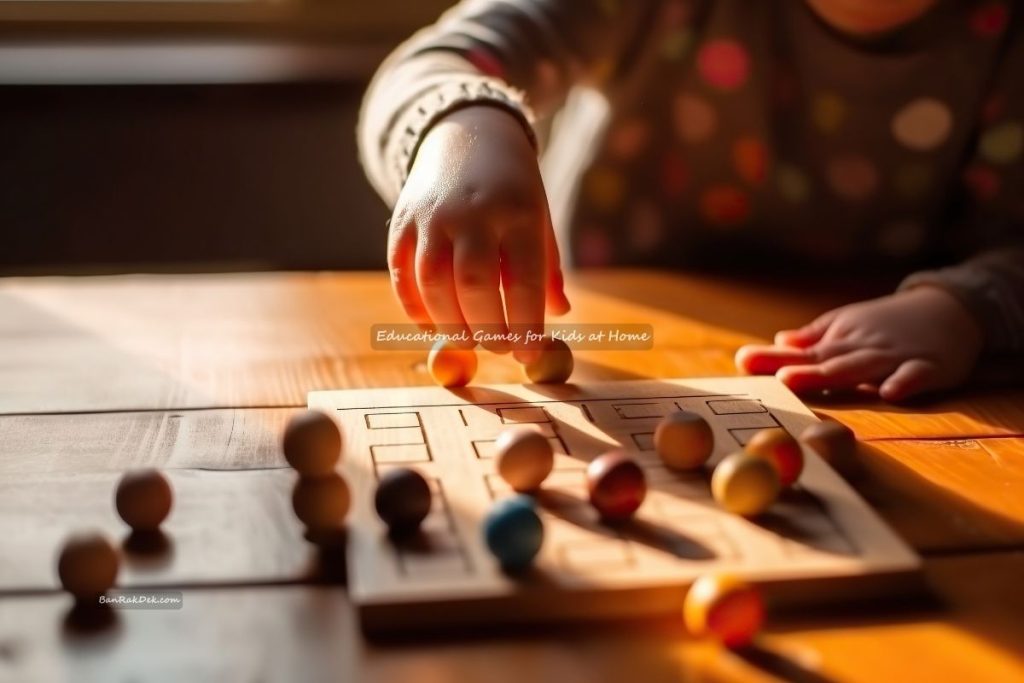
These educational games for kids at home make practice feel like play—and that keeps motivation high on busy school nights.
Family & Cooperative Learning Games (Parent-Child Activities)
Why cooperation counts: Working as a team nurtures empathy, turn-taking, and communication—skills that fuel academic success and peaceful homes.
A. Story-Round Table
- Skills: Oral language, narrative structure, creativity.
- Setup: A “story basket” with objects (shell, spoon, toy car).
- Play: Each player adds a sentence using an object; younger kids can mime actions as they speak.
B. Mystery Chef
- Skills: Following directions, sequencing, measurement, cultural literacy.
- Setup: Choose a simple family recipe or snack.
- Play: One person is the “chef” giving two-step directions; others follow. Rotate roles and discuss flavors, textures, and family traditions.
C. Cooperative Board Games Night
- Skills: Strategy, planning, teamwork.
- Setup: Choose cooperative titles where the family wins together.
- Play: Introduce roles (note-taker, timekeeper) so every child has agency.
D. Kindness Quest
- Skills: Social-emotional learning, executive function.
- Setup: A weekly checklist: “Help a sibling,” “Share a toy,” “Say thanks in two languages.”
- Play: Celebrate completed quests with a family dance or sticker.
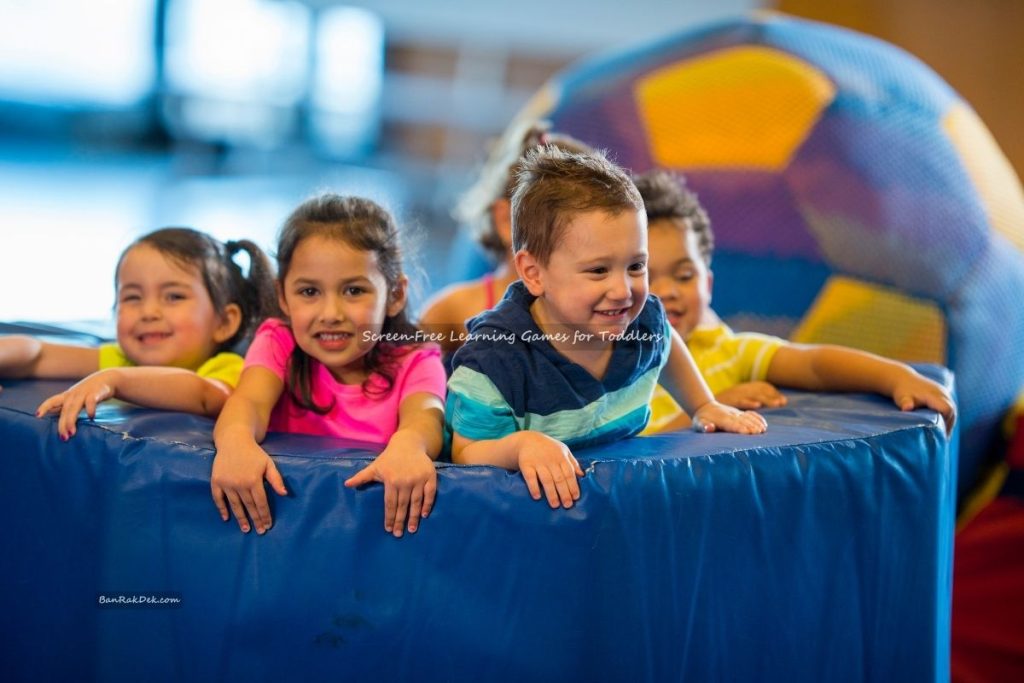
These ideas work beautifully as learning activities for kids at home because they weave connection into skills practice—no extra prep, just presence.
DIY & Printable Learning Games (Creative, Low-Prep Ideas)
Busy day? Reach for low-prep options using what you already have.
A. Tape-Trail Letters & Numbers
- Skills: Letter formation, number recognition, gross-motor.
- Setup: Painter’s tape on the floor in letter/number shapes.
- Play: Drive small cars along the path; walk the curves; call out sounds or values.
B. Closet-Door Word Ladder
- Skills: Word families, spelling patterns.
- Setup: Sticky notes on a door: at, bat, cat, hat… then shift to “-an” or “-ap.”
- Play: Race to swap notes to build new families; photograph each ladder to revisit later.
C. Map-It Scavenger Hunt
- Skills: Geography, spatial reasoning, mapping.
- Setup: Draw a simple floor map; hide three tokens.
- Play: Give “hot/cold” hints using cardinal directions or distances (“five steps north, two west”).
D. Recycled-Cap Math
- Skills: Counting, addition, inequalities.
- Setup: Write numbers on bottle caps; add “>” and “<” signs on index cards.
- Play: Build quick equations and compare values.
E. Print-and-Play Mini Packs
- Skills: Mixed: phonics, sight words, number bonds, logic.
- Setup: Keep a folder of printables; laminate or slip into plastic sleeves to reuse.
- Play: Rotate 10-minute tasks as stations—kids feel in control, you keep structure.
DIY games stretch your budget and creativity. Mix and match with educational games for kids at home, especially when you need a fast after-school plan or weekend backup. Many families also blend DIY with learning activities for kids at home they can grab from a folder—zero decision fatigue.
Screen-Free vs. Digital: Finding a Healthy Balance
Screens can support learning when used intentionally, but they’re not a default plan. Prioritize hands-on, screen-free play for sensory and social benefits. When you add digital time, aim for:
- Interactive over passive. Choose tools that require thinking, speaking, or creating.
- Short, structured sessions. Use a timer and a purpose: “practice word blends for five minutes.”
- Co-viewing when possible. Sit with your child; ask questions to deepen understanding.
Even in a digital age, parents often report their child remembers the “real-world” challenges most—building a bridge from paper, mixing colors to make new shades, performing a silly rhyme. Use tech as a targeted support, not the main stage of your learning activities for kids at home plan.
Make Learning Activities for Kids at Home Part of Your Day (Routines & Tips)
Busy families succeed with tiny habits. Try these integration tricks:
Morning:
- One-minute word warm-up. Put a sticky-note riddle on the fridge.
- Number hunt. Read house numbers or elevator panels; ask “What’s one more?”
After School:
- Snack-Math Chat. Compare halves and quarters with fruit.
- Five-card word draw. Pull sight-word cards; act out one new word.
Evening:
- Story switch. Read a page, your child narrates the next.
- Gratitude count. List three good things; tally weekly totals on a chart.
Weekly anchors:
- Family game night. Rotate a cooperative pick.
- Skill spotlight. Choose a theme—measuring, maps, rhymes—and layer it into chores and play.
When you build gentle rhythms around learning activities for kids at home, skills grow in the background while family life stays front and center.
Age-Wise Game Menu (Quick Reference)
(Clip or pin this section for fast planning.)
Toddlers (18–36 months)
- Color scoop and sort with spoons (fine-motor + language)
- Sound basket (collect items that start with a focus sound)
- Two-step action cards (clap, tap, spin)
Preschool (3–5 yrs)
- Sticker-dot counting trails (number sense)
- Silly rhyme builder (phonological awareness)
- Shape hunt around the home (geometry)
Early Primary (5–7 yrs)
- Word-dash relay (sight words)
- Deck-of-cards math (addition/subtraction)
- Pattern detective (logic)
Upper Primary (8–10 yrs)
- Kitchen fraction lab (measurement)
- Bridge-builder challenge (engineering)
- Map-it scavenger hunt (spatial reasoning)
Materials Starter Kit (Low-Cost, High-Impact)
- Painter’s tape, sticky notes, index cards
- Bottle caps, clothespins, cupcake liners
- Markers, crayons, child-safe scissors
- Dice, a standard card deck, snap cubes or blocks
- Zip pouches or clear sleeves for printable reuse
Cultural & Family Tips (Make It Yours)
- Language inclusion: Label items in your home language and in English; alternate storytelling languages nightly.
- Local life: Use market receipts for number hunts; count steps at temples or parks; track rainfall in a notebook during monsoon season.
- Family recipes: Bake once a week to practice fractions, sequencing, and time. Share the dish’s story—who taught you, when you eat it, what it celebrates.
- Intergenerational play: Invite grandparents to lead songs, riddles, and proverbs; record them as audio “clues” for scavenger hunts.
- Values in action: Build a “kindness quest” board with culturally meaningful acts—greetings, sharing food, helping neighbors.
Troubleshooting: When Games Go Sideways
- My child loses interest fast. Shorten to 3–5 minutes, then stop while it’s still fun.
- Different ages at once is hard. Give older kids a “coach” role; let them design a variation.
- We keep forgetting to play. Anchor one mini-game to a daily moment (snack, bath, bedtime).
- I’m worried about mess. Choose contained setups (tray activities, zip pouches) and clean-as-you-go rules.
- We need quiet options. Try sticker grids, word ladders, or map-drawing with whispered clues.
Sample 7-Day Play Plan (Plug-and-Play)
Mon: Word-Dash Relay (5 min) → Story switch (bedtime)
Tue: Tape-Trail Numbers (5–8 min) → Gratitude count (evening)
Wed: Card-Game Math (10 min) → Pattern Detective (5 min)
Thu: Kitchen Fraction Lab (15 min) → Map-It Scavenger (10 min)
Fri: Family Cooperative Game Night (20–30 min)
Sat: DIY Print-and-Play pack rotations (20 min total)
Sun: Kindness Quest check-in + photo journal of the week’s creations
Conclusion: Keep Playful Momentum Rolling
If you take one idea from this guide, let it be this: learning thrives in ordinary moments. A line of tape becomes a racetrack for letters; a bowl of bottle caps becomes a math lab; a recipe becomes a measuring workshop laced with family stories. Keep a small basket of go-to materials—sticky notes, markers, tape, index cards—and rotate games by day or by skill. The goal isn’t perfection; it’s presence, laughter, and slow, steady progress.
Above all, remember that educational games for kids at home don’t demand special equipment—just a curious parent, a willing child, and the freedom to tinker. Celebrate tiny wins, take photos of creations, and invite your child to modify the rules. When kids help design the play, they’re not just learning skills; they’re discovering who they are as thinkers, makers, and teammates. Play on!
🧩 FAQs About Educational Games for Kids at Home
1. What are the best educational games for kids at home?
The best educational games for kids at home are hands-on, simple, and adaptable. Try DIY counting games, phonics scavenger hunts, or card-based math games that teach while keeping kids engaged.
2. How can I make learning activities for kids at home more engaging?
Mix short, playful sessions with storytelling, songs, or challenges. Rotate learning activities for kids at home weekly to include sensory play, STEM projects, and creative problem-solving tasks.
3. Are screen-free learning games better for children?
Yes—screen-free learning games at home promote focus, creativity, and social interaction. Use screens occasionally for guided learning apps, but prioritize real-world play for richer skill development.
4. What age-appropriate games help toddlers learn at home?
For toddlers, choose educational games for kids at home that focus on sorting, matching, and sound exploration—like color sorting bowls, sensory treasure hunts, or alphabet sound walks.
5. How can parents include learning games in daily routines?
Anchor learning activities for kids at home to daily habits—counting fruit at breakfast, reading signs on walks, or storytelling at bedtime. These micro-moments nurture lifelong curiosity.






